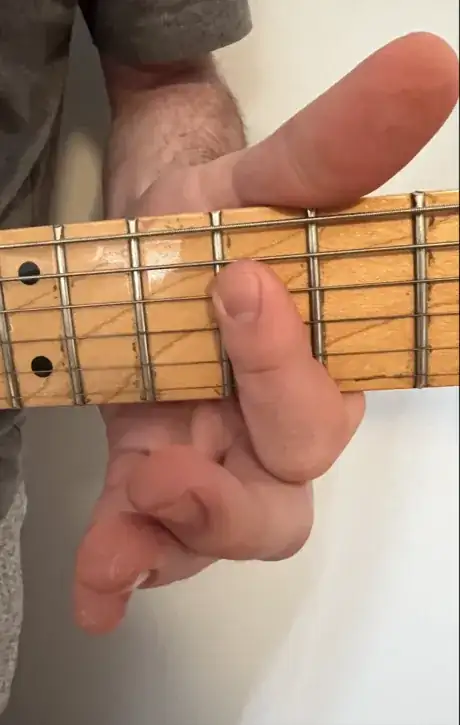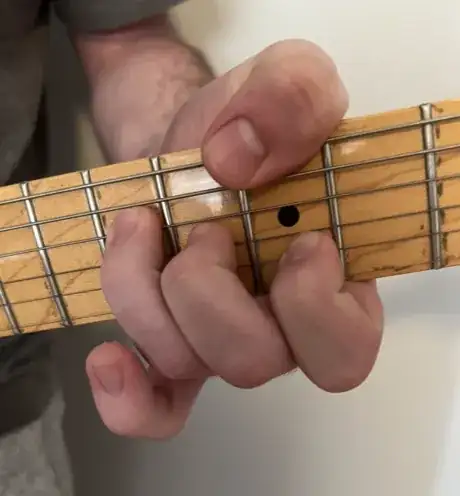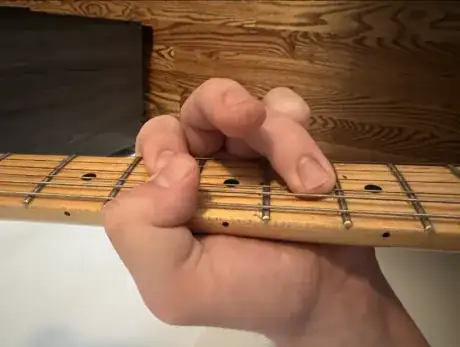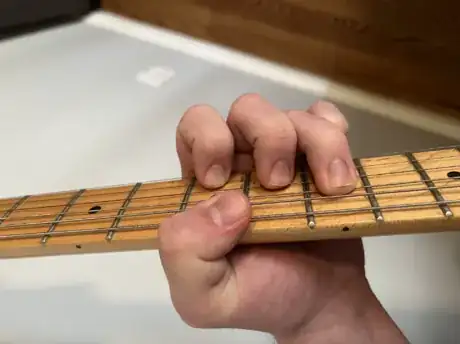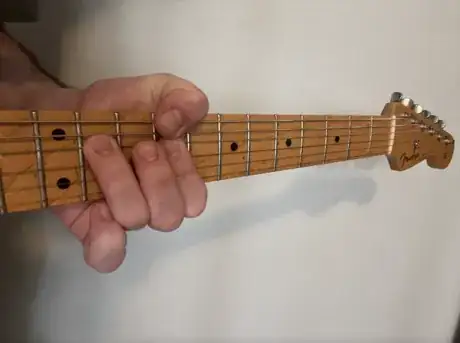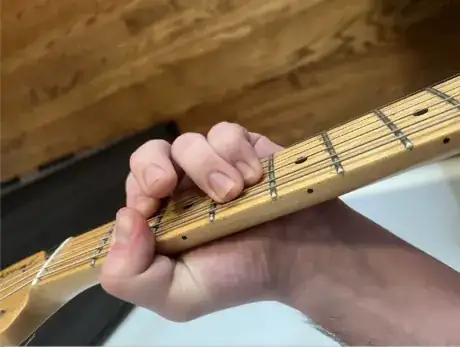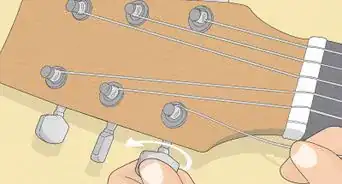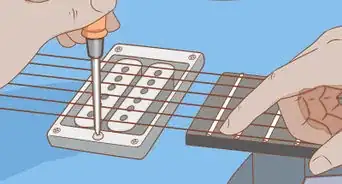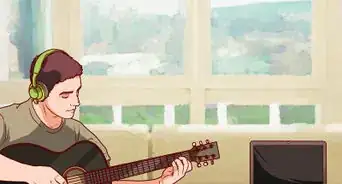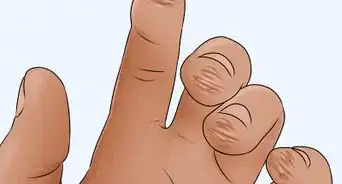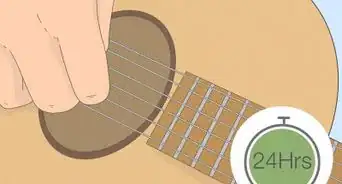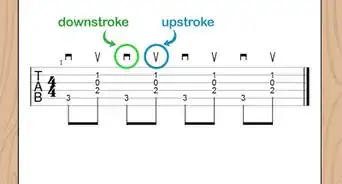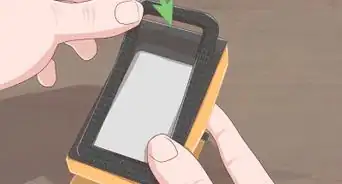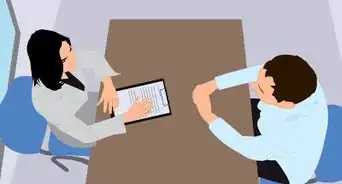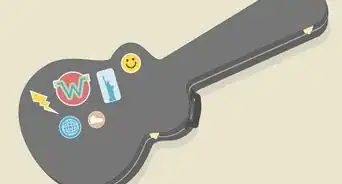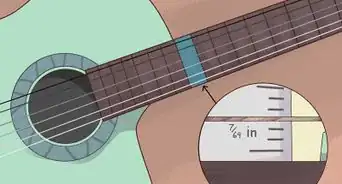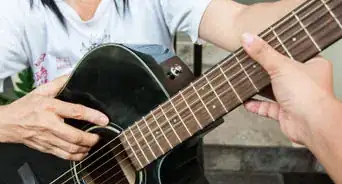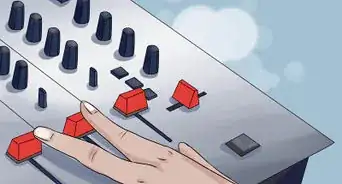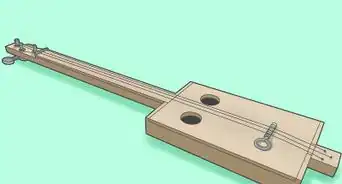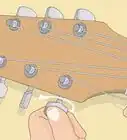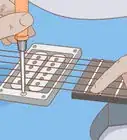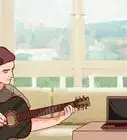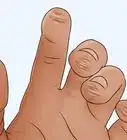X
wikiHow is a “wiki,” similar to Wikipedia, which means that many of our articles are co-written by multiple authors. To create this article, volunteer authors worked to edit and improve it over time.
Learn more...
This set of step by step instructions teaches how to play the song "Last Train Home" off of the 2021 album Sob Rock by John Mayer. This method replicates how John Mayer plays it based off of numerous performances.
Steps
Part 1
Part 1 of 2:
Learning the Chords
-
1Tune your guitar to standard tuning. To ensure that the instrument is in tune, use a physical or digital guitar tuner. Start by tuning the first string (the thinnest one at the bottom of the neck) to E. The next string going up should be tuned to B, followed by G, then D, A, and finally the top string is also tuned to E.
-
2Start with the A major chord. You can play just a standard A major chord, but John Mayer uses mostly inverted chords in his playing. The A major chord he commonly plays on this song begins at the 11th fret, by placing your ring finger on the 4th string. Place your index finger on the 9th fret of the 3rd string, and your middle finger on the 10th fret of the second string. Play all notes together to produce the chord. This creates what is called a triad chord, which is a chord shape made up of just three notes. When playing the chord you may let the 5th, or A string ring out with the other three notes, since it is the bass note of the chord. This is the first chord you will need.[Image:Amajor.png|center]]Advertisement
-
3Play an E major chord. Hold the A major for one beat only then progresses to an E major chord, which is also played in the form of a triad. It is rooted on the 9th fret of the guitar, by placing your index finger across the 2nd, 3rd, and 4th string. Let your index finger mute the 5th string and play the open 6th string bass note to play it according to how John Mayer plays it. This chord rings out for 3 beats.
-
4Play a B major chord. Place your index finger on the 7th fret of the 2nd string. Put your middle finger on the 8th fret of the 3rd string, and ring finger on the 9th fret of the 4th string. Finally, place your thumb over the neck to cover the 7th fret of the 6th string, muting the 5th string. This chord shape may take some practice to get down, and it can still be played without the 6th string being covered. To play an easier version you can play just the triad without the bass note.
-
5Play a G# minor chord. Following the B major chord is a G# minor (G sharp minor) chord. This chord is rooted at the 4th fret, by barring your index finger over both the 2nd and 3rd string. Next place your ring finger on the 6th fret of the 4th string. Once again you can play the bass note on top of the triad to add more depth to the chord. Do so by placing your thumb over the 4th fret of the 6th string, again muting the 5th string as well.
-
6Resolve to an A major chord. The main chord progression for the verse and chorus ends by resolving back to an A chord. However, if playing this song true to the artists form, it is a different inversion of the chord than the one taught earlier. This inversion is rooted at the 5th fret, which makes the switch from the previous chord easier, since it was rooted at the 4th fret. Place your index finger on the 5th fret of the 2nd string, your middle finger on the 6th fret of the 3rd string, and your ring finger on the 7th fret of the 4th string. Place your thumb over the 5th fret of the 6th string to complete the chord.
-
7Play a C# minor chord. There are two more chords that are used in this song, and they are played during the pre-chorus. The first one is a C# minor chord, that is rooted at the 9th fret. Place your index finger over the 3rd and 4th string. Then place your ring finger on the 11th fret of the 5th string and place your thumb over the 9th fret of the 6th string. Only play the notes that your fingers are on, not hitting the open strings.
-
8Finish with the final F# minor chord. This chord is played at the turnaround before going back into the verse progression. Starting at the 2nd fret, place your index finger on the 3rd string. Then place your ring finger on the 4th fret of the 4th string and your pinky finger on the 4th fret of the 5th string. Lastly, place your thumb over the 2nd fret of the 6th string and strum all of the strings, allowing the open strings to ring out as well.
Advertisement
Part 2
Part 2 of 2:
Playing the Song
-
1Use a metronome to get the timing down. Once you’ve got the chords down, you can begin to put them together with the rhythm of the song. Like mentioned earlier, the song is in 4/4 timing, so it may be helpful to use a metronome to ensure that you are staying on the beat. Practicing with the song can also help get the rhythm down. If you are using a metronome set it to 93 beats per minute, which is the same BPM as the song.
-
2Set the metronome and play the song. The song begins with the A major chord, holding for only one beat before switching to the E major chord, letting it hold for the rest of the 4-count. It then repeats the first two chords again, but instead of holding the E major chord, it then progresses to a B major, then G# minor and then to the second inversion A major chord. The verse progression ends by moving back to the G# minor for 3 down-strums and then holds on the A major. This is the chord progression that predominates the song, and is played through the intro, verses, and the outro/chorus.
-
3Move to the pre-chorus. The pre-chorus that leads back into the verse and eventually the outro introduces the C# minor and F# minor chords. It begins with holding the A major for a measure (4 bar count) and then holding the C# minor for a measure. It then holds the E major chord for 4 bars and then an A major for 4 bars. It then repeats the 4 bar hold on the A major and C# minor again, before holding the F# minor chord for 4 bars and then to an A major for 2 bars and a B major for the remaining two bars before going back into the main chord progression played throughout the rest of the song.
-
4Play the whole song together. Now that you know the song piece by piece, learning the chords and how to fret them and the two sections of the song, you should be able to play the whole song from start to finish. Play along with the album track, to help get down the rhythm and the timing. You may also use any shape or inversion of the chords listed above, but these are how the artist who wrote it plays it. Enjoy playing ‘Last Train Home’ like John Mayer himself!
Advertisement
References
About This Article
Advertisement
